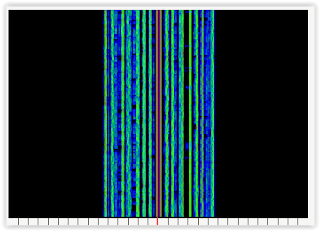I recently bought a Flex 6500 and decided to play around with all those panadapters in the CQ WPX CW contest. I call it quasi SO3R. My goal in the contest is to increase DXCC total and band fills on DXCC and generally just play around.
The programs I am using are SSDR, SmartCAT, DAX, SDR-Bridge, DDUTIL V3, VE7CC cluster client, DXLab suite, and WriteLog. All of these mesh together in a functional unit. I have 3 panadapters open one each on 80, 40 and 20. I also had 15 open but the band closed. Each skimmer is connected to its own DAX channel and is controlled through a telnet client in SDR-Bridge. WriteLog also connects through SDR-Bridge and is tightly integrated. The writelog band maps are populated with stations through Skimmer and through VE7CC spots. To enter data into the correct Writelog data window, I can click a station on a band map, or on skimmer and the data will be copied into the correct entry fields. I can also type data. To choose a band I use the keyboard up down arrows or click the pan, or click the skimmer, or click the bandmap. When I change bands in this manner, the TX is assigned to the correct panadapter, and the correct antennas are chosen. I have a amp/antenna system that follows TX. When TX is on 20M my 20M xmit antenna is chosen and my amp switches to 20M. My 20M antenna is flat so no tuning necessary. Same with 40 and 80. Change bands and everything follows. For receive I am using a Wellbrook large aperture loop antenna on all bands so I have good strong low noise receive signals. The loop preamp does not distort and is bullet proof so far.
Included is a video I made to demonstrate but the quality is only fair since I have 3 skimmers, 3 panadapters, and I'm using a remote base hookup to get audio and video into my screen casting program. All of that especially the screen casting program takes my computer to the 85% + performance load. With the screen caster off things are perfectly smooth even with all of this video/audio activity.
This is not true SO3R or SO2R but actually is very close and quite amazing. By populating 3 skimmers and 2 bandmaps the stations presented to me are pretty much stations heard at my QTH real time. My goal is to increase DXCC and DXCC band fills and this setup accomplishes that quite nicely. If I do get a new one I simply enter the data into DXLab.
Since my RX and TX antennas are separate SO2 or SO3R is simulated but since I am not full duplex it is not quite SO2 or SO3R however the QSK in this configuration is very fast and all of the data in skimmer and band map fills some of that gap in operation. I would have to become a much better contest op to
leverage this setup but it's not impossible to use this
I did get all three band maps running by upgrading my Writeog to the latest version. The latest also has a switch which allows the band maps to readout freq in the same direction as skimmer
73 W9OY














































